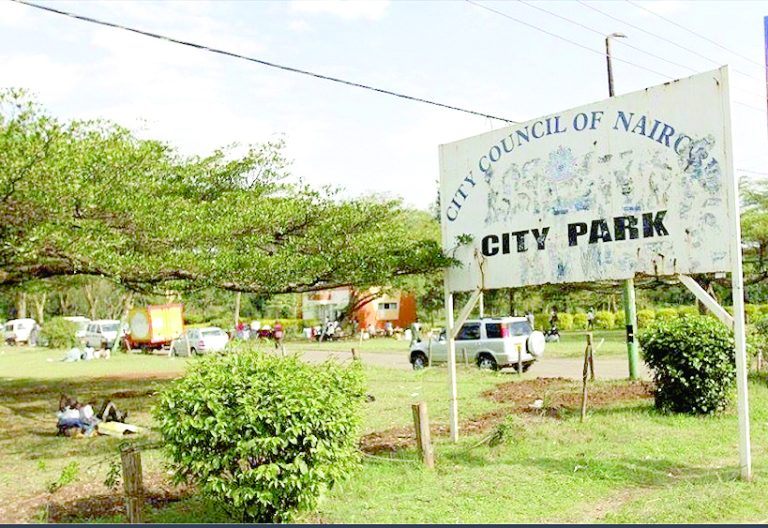We must stand up, speak out against move to grab City Park

There are attempts to grab part of City Park. This forest in the green heart of Nairobi and protected under the Kenya Forest Service (KFS), is under siege by those who see only profit in its lush expanse. Shadowy figures with questionable documents and corrupt intentions hover like vultures, eager to carve up this sanctuary and replace it with concrete and steel.
But City Park is not just a piece of land, it is a living, breathing entity, and its defenders are rising to ensure that it does not fall.
An old fig tree has stood in City Park for generations, its roots stretching deep into the earth like fingers gripping onto history. It has witnessed lovers whispering sweet nothings beneath its shade, children chasing each other in the afternoon sun, and elders seeking solace on its sprawling roots. Birds wove melodies through its branches, and the wind carried secrets only the trees could understand.
Now, however, the whispers have turned into cries, the cries of a forest fighting for its life against greedy hands reaching to snatch it away.
A green space that has coexisted with the city for decades, City Park is more than just a stretch of land under KFS’s watchful eye. It is the lungs of the city, filtering out pollution and exhaling fresh air for the bustling metropolis. Every morning, joggers trace its meandering paths, and nature lovers find solace in its embrace.
But like a hunter eyeing his prey, land grabbers have circled this oasis, eager to sink their claws into its life-giving soils. These sinister figures, armed with forged documents and driven by graft, only see profit where others see life. They dream of replacing trees with concrete beams, of paving over nature with, pavements, parking lots and high-rises.
Dubious characters
If they succeed, the city will lose more than just a forest it will lose a piece of its soul.
Creatures that have called it home for generations stir in oblivious unease, deep within the park. The vervet monkeys leap from branch to branch, sensing a shift in the winds. The dik-diks, those tiny, timid antelopes, twitch their noses at an unfamiliar tension. The birds, always messengers of change, sing songs of warning. The trees, however, are the silent heroes. They do not fight with weapons, nor do they speak with human tongues.
Instead, they resist in their own way, by standing firm, by sheltering those who seek refuge in their shade, and by continuing to cleanse the city’s air even as developers sharpen their axes. If the city loses this forest, the air will grow heavier with dust and smoke, and the songbirds will be replaced by the honking of impatient cars.
This is not the first time City Park has faced danger. Over the years, greedy tycoons have tried to carve pieces from it, chipping away at its edges with dubious deals and underhanded tricks.
But the people of Nairobi have always fought back.
Conservationists, nature lovers, and ordinary citizens have rallied, their voices rising like a storm. They have reminded everyone that a city without its green spaces is nothing more than a lifeless maze of steel and glass.
The KFS has played a crucial role in protecting this treasure. Tasked with safeguarding forests across the country, they stand as guardians against those who would see trees fall for short-term gain. But they cannot do it alone. The fight for City Park is not just theirs, it belongs to all who breathe its air, all who find peace in its paths, and all who believe that nature should not be sacrificed for greed.
Ominous signs
Imagine a Nairobi without City Park. Picture a skyline choked with smog, where birds no longer sing and children grow up without knowing the joy of climbing a tree. Envision a place where the only green left is the money exchanged in backroom deals, while the real greenery disappears under bulldozers and false promises.
If the park falls, the damage will be irreversible. The cooling effect of its trees will be lost, making the city even hotter. Floods will become more frequent, as tree roots that once held the soil together will no longer be there. And the wild creatures that call it home? They will vanish, displaced by a world that no longer has space for them.
But all is not lost. The whispers of the trees are growing louder, urging those who love the park to stand up before it’s too late. Protecting City Park is not just about saving a forest but it is about preserving the heart of Nairobi, ensuring that future generations inherit a city that still has room for nature.
Every citizen has a role to play. Speak out against land grabbing. Support conservation efforts. Hold leaders accountable. And above all, visit the park, enjoy walking in its trails, listen to its birds, breathe its air. For only by knowing and loving it can we truly protect it.
The old fig tree still stands, waiting for the people of Nairobi to decide its fate. Will it be felled, or will it continue to watch over the city for generations to come? The answer lies not in the hands of the greedy, but in the hearts of those who still believe in the whispers of the forest.
Job Mwangi is a lawyer and the advocacy manager at the Green Belt Movement.














